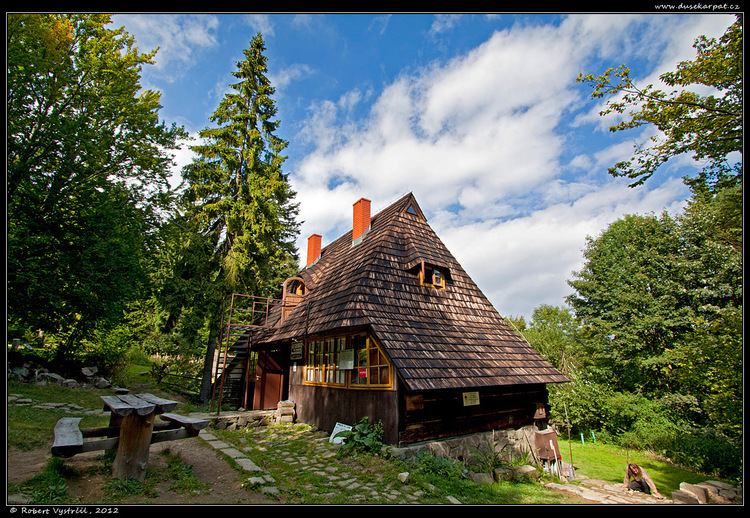Highest point Piotruś Mountains Piotruś, Bukowica Range | Elevation 1,002 m (3,287 ft) Area 7,000 km² Types of rock Granite, Gneiss | |
 | ||
Length 120 km (75 mi) west-east Width 50–70 km (30–40 mi) north-south Similar Bieszczady Mountains, Beskids, Żywiec Beskids, Gorce Mountains, Island Beskids | ||
The Low Beskids or Lower Beskids (Polish: Beskid Niski, Slovak: Nízke Beskydy), are one of the Beskids mountain ranges in the Outer Eastern Carpathians in southeastern Poland and northeastern Slovakia. Is a hilly region in Prešov Region, Sanok County and Jasło County, between Busov, Ondavská vrchovina, Laborecká vrchovina, Beskydské predhorie in Slovakia, Beskid Sądecki, Pogórze Bukowskie and Bieszczady near the river Wisłoka, Wisłok and Osława in Poland. The mountain has two separate summits, one of 1,002 (Busov) and one of 997 metres (Lackowa). The Low Beskids separating the East from the Western Carpathians.
Contents
- Map of Low Beskids Poland
- Division
- Poland
- Slovakia
- Towns and villages
- Ethnic groups
- Hiking trails
- Literature
- References
Map of Low Beskids, Poland
Original flora and fauna was preserved because of the area's remoteness. The mountain range is covered with beech forests. The area is protected by Magurski National Park and Jaśliski Park Krajobrazowy. Animals living in this reserve are, amongst others, black storks, deers and wolves.
Division
Since there exist many variants of divisions of the mountain ranges and names for the Beskids, several divisions are given in the following:
Poland
The region then became a site of contention between Poland, Kievan Rus and Hungary starting in at least the 9th century. The population was primarily Slavic but with contentions over nationality. Germans and town dwelling Lemkos were Polonized and the countryside remained primarily Lemko/Ukrainian. Up until 1947, the majority of the population was Lemko (Rusin). The Lemkos are sometimes considered the westernmost of the Ukraininans. They were forcibly removed in a Polinization plan agreed between the Soviet Union and the Polish communist government. Many were killed or forcibly sent to Soviet Ukraine. Those not sent to Ukraine were dispersed among towns and villages in the new western Polish territory taken from Germany.
Slovakia
The Lower Beskids on the territory of present-day Slovakia has attracted settlers since the Stone Age. The Slavic forefathers of the Slovaks gradually moved to the basin of Humenné and Bardejov during the great migration of peoples, starting in the 5th century. An intensive and organized settlement of this area started as late as in the middle of the 13th century, after the Mongol raids. However, the first written reference to the town dates back to the 1240s, when monks from Bardejov complained to the King Béla IV about a violation of the town’s borders by Prešov.
Towns and villages
Important towns and villages of this region include:
